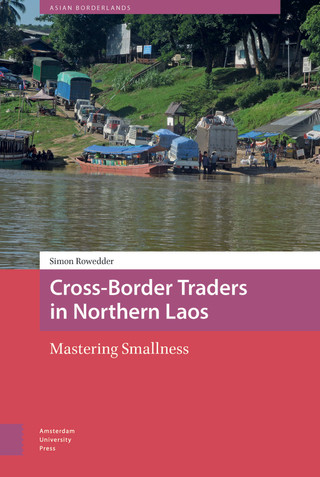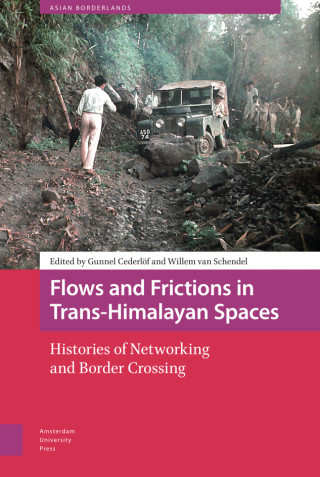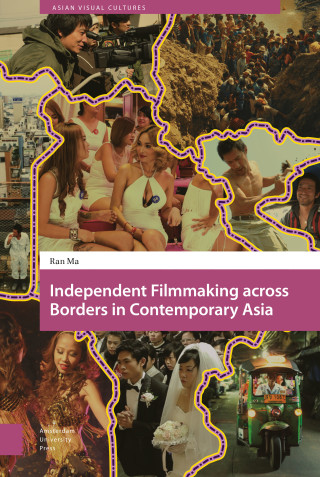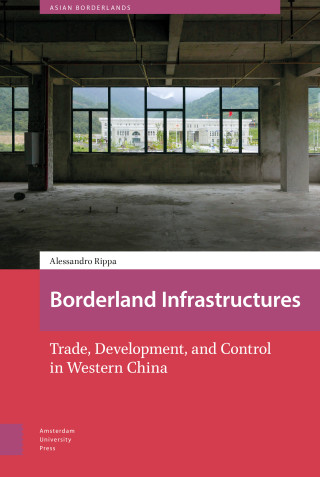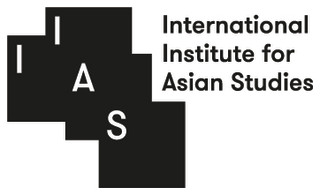
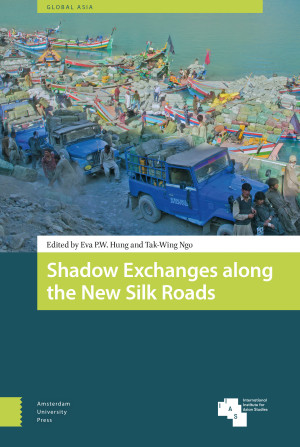
- Title
- Shadow Exchanges along the New Silk Roads
- Editors
- Eva P. W. Hung
- Tak-Wing Ngo
- Price
- € 129,00 excl. VAT
- ISBN
- 9789462988934
- Format
- Hardback
- Number of pages
- 298
- Language
- English
- Publication date
- 18 - 08 - 2020
- Dimensions
- 15.6 x 23.4 cm
- Series
- Global Asia
- Partner

- Discipline
- Asian Studies
- Preview
- Download Preview
- Also available as
- eBook PDF - € 128,99
Preface
List of Illustrations
Abbreviations
1. Introduction: Informal Exchanges and Contending Connectivity along the Shadow Silk Roads
Tak-Wing Ngo and Eva P. W. Hung
2. Fragmented Sovereignty and Unregulated Flows: The Bangladesh-China-India-Myanmar Corridor
Willem van Schendel
3. In and Out of the Shadows: Pakistan-China Trade across the Karakoram Mountains
Hasan H. Karrar
4. Circulations in Shadow Corridors: Connectivity in the Northern Bay of Bengal
Samuel Berthet
5. Past and Present: Shadows of the China-Ladakh-Pakistan Routes
Vaijayanti Khare
6. Formal versus Informal Practice: Trade of Medicinal and Aromatic Plants in Trans-Himalayan Silk Road
Arjun Chapagain
7. Formal versus Informal Chinese Presence: The Underbelly of Hope in the Western Balkans
Jelena Gledi?
8. State Approaches to Nonstate Interactions: Cross-border Flows in Xinjiang and Kazakhstan
Olga Y. Adams
9. Integration in Post-Soviet Central Asia: Shadow-Economy Practices and the Cross-Eurasian Flow of Commodities
Ivan Zuenko
10. In the Shadow of Constructed Borderlands: China's One Belt One Road and European Economic Governance
Susann Handke
11. High-end Globalization and Low-end Globalization: African Traders across Afro-Asia
Gordon Mathews
Index
List of Illustrations
Abbreviations
1. Introduction: Informal Exchanges and Contending Connectivity along the Shadow Silk Roads
Tak-Wing Ngo and Eva P. W. Hung
2. Fragmented Sovereignty and Unregulated Flows: The Bangladesh-China-India-Myanmar Corridor
Willem van Schendel
3. In and Out of the Shadows: Pakistan-China Trade across the Karakoram Mountains
Hasan H. Karrar
4. Circulations in Shadow Corridors: Connectivity in the Northern Bay of Bengal
Samuel Berthet
5. Past and Present: Shadows of the China-Ladakh-Pakistan Routes
Vaijayanti Khare
6. Formal versus Informal Practice: Trade of Medicinal and Aromatic Plants in Trans-Himalayan Silk Road
Arjun Chapagain
7. Formal versus Informal Chinese Presence: The Underbelly of Hope in the Western Balkans
Jelena Gledi?
8. State Approaches to Nonstate Interactions: Cross-border Flows in Xinjiang and Kazakhstan
Olga Y. Adams
9. Integration in Post-Soviet Central Asia: Shadow-Economy Practices and the Cross-Eurasian Flow of Commodities
Ivan Zuenko
10. In the Shadow of Constructed Borderlands: China's One Belt One Road and European Economic Governance
Susann Handke
11. High-end Globalization and Low-end Globalization: African Traders across Afro-Asia
Gordon Mathews
Index
Eva P. W. Hung, Tak-Wing Ngo (eds)
Shadow Exchanges along the New Silk Roads
Long before China promulgated the official One Belt One Road initiatives, vast networks of cross-border exchanges already existed across Asia and Eurasia. The dynamics of such trade and resource flows have largely been outside state control, and are pushed to the realm of the shadow economy. The official initiative is a state-driven attempt to enhance the orderly flow of resources across countries along the Belt and Road, hence extending the reach of the states to the shadow economies. This volume offers a bottom-up view
of the transborder informal exchanges across Asia and Eurasia, and analyses its clash and mesh with the state-orchestrated Belt and Road cooperation. By undertaking a comparative study of country cases along the new silk roads, the book underlines the intended and unintended consequences of such competing routes of connectivity on the socio-economic conditions of local communities.
Editors
Eva P. W. Hung
Eva P.W. Hung is an Associate Professor at the Department of Social Science, the Hang Seng University of Hong Kong. Her research interests include contentious politics, cross-border exchanges, shadow economy, state-society relations, and China studies. She has published articles in the Journal of Contemporary Asia, Modern China, Communist and Post-Communist Studies, and Social Indicators Research.
Tak-Wing Ngo
Tak-Wing Ngo is Professor of Political Science at the University of Macau. He works on East Asian politics and political economy. He formerly taught at Leiden University and was the IIAS Professor of Asian History at Erasmus University Rotterdam. He is the editor of the refereed journal China Information and co-editor of the Journal of Contemporary Asia.

